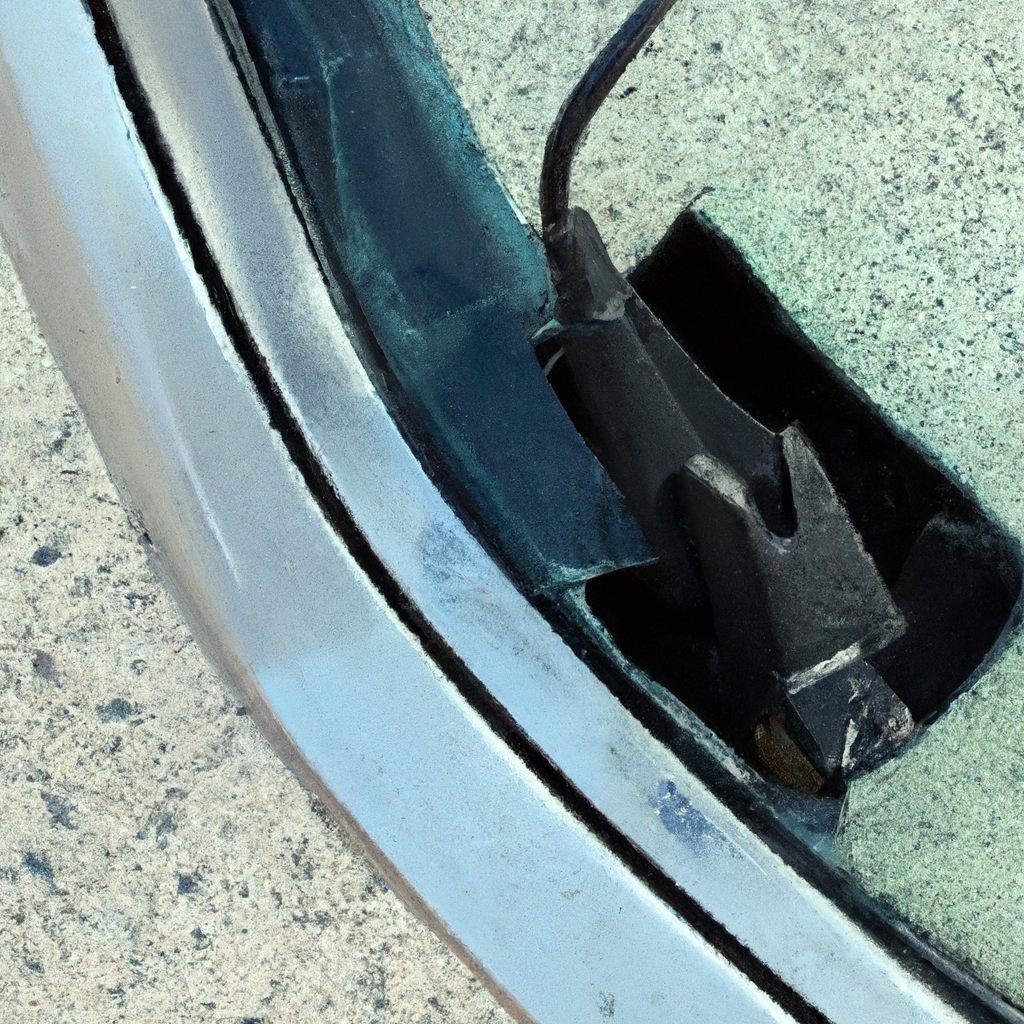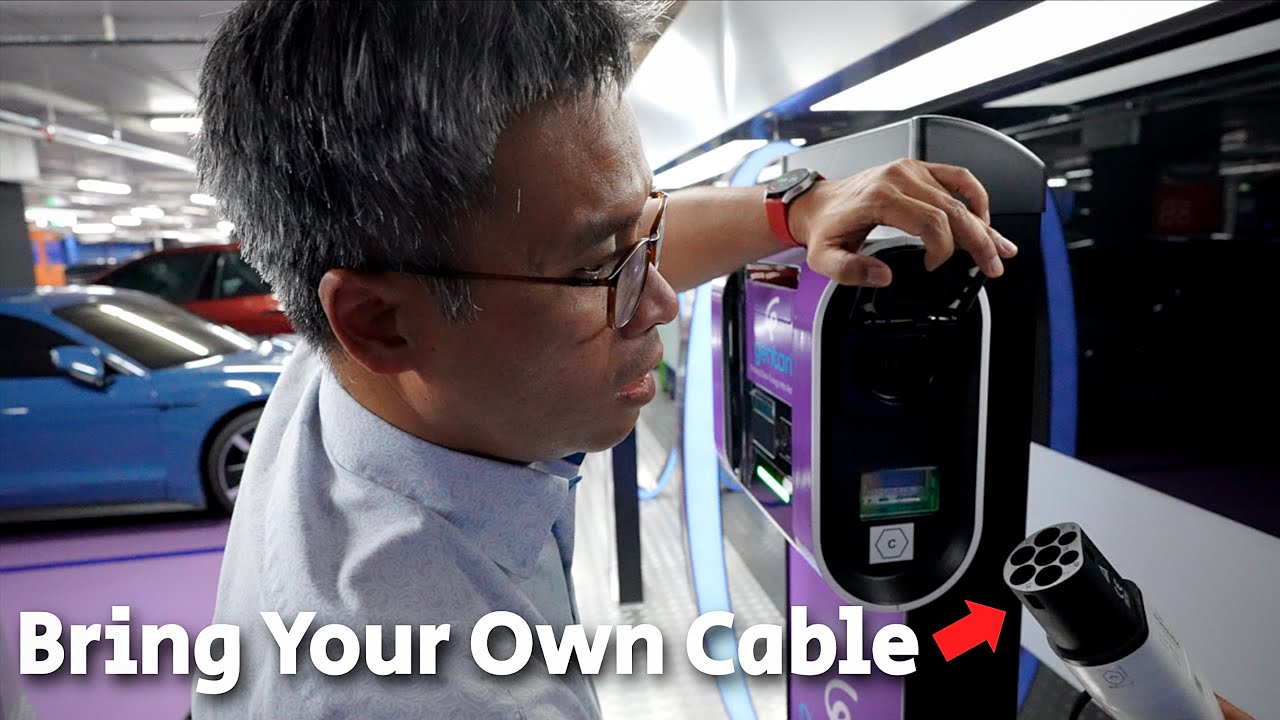
EV charger vandalism is becoming a growing concern in today’s world, as more and more people switch to electric vehicles. This article aims to address this issue and provide insights into the various security measures that can be implemented to protect EV chargers. Whether you are an EV charger expert or someone who is simply curious about the topic, this article will offer valuable information, presented in a friendly manner, to entice you to read more. From proper tagging to incorporating videos and alt text, each post will be crafted with care to ensure a comprehensive understanding of EV charger vandalism and how to safeguard against it.

Understanding EV Charger Vandalism
Introduction to EV charger vandalism
Electric vehicle (EV) charger vandalism has become a growing concern in recent years. Vandalism refers to any intentional act of damaging or destroying EV charging stations, equipment, or cables. The motives behind such acts can vary, ranging from personal grievances to environmental opposition. Vandalism not only causes financial losses for charging station operators but also inconveniences EV owners and disrupts the charging infrastructure network.
Common types of vandalism
EV charger vandalism can take various forms. Frequently observed types include physical damage to charging stations, such as breaking or cutting cables, smashing charging ports, or spray painting graffiti on the equipment. Malicious activities may also involve theft of charging cables or entire charging units. Additionally, tampering with electrical connections or disabling safety features can pose risks to both the charger and the EV.
Consequences of EV charger vandalism
The consequences of EV charger vandalism are significant and wide-ranging. Charging station operators incur financial losses due to repair or replacement costs, leading to potential delays in expanding charging infrastructure. EV owners experience inconveniences as they may be unable to charge their vehicles, limiting their mobility. Moreover, the disruption caused by vandalism affects the reliability and availability of charging infrastructure for the entire EV community.
Factors Contributing to EV Charger Vandalism
Lack of surveillance and monitoring
One significant factor contributing to EV charger vandalism is the lack of adequate surveillance and monitoring systems. Charging stations located in remote or poorly lit areas without surveillance cameras or security personnel are inviting targets for vandals. The absence of real-time monitoring makes it difficult to detect and respond promptly to acts of vandalism, allowing culprits to escape undetected.
Easy accessibility of charging infrastructure
Another factor that contributes to EV charger vandalism is the easy accessibility of charging infrastructure. In many cases, charging stations are installed in public areas with limited physical barriers or restrictions. This makes it easier for vandals to approach the charging equipment and engage in destructive activities without much interference. A lack of proper access control measures can make charging stations vulnerable to vandalism.
Perceived lack of consequences
The perceived lack of consequences for vandalizing EV chargers can also contribute to the prevalence of such acts. Vandals may believe that their actions will go unnoticed or unpunished, leading to a sense of impunity. Inadequate follow-up by law enforcement agencies or lenient penalties for offenders can further reinforce this perception, encouraging more acts of vandalism.

Impact of EV Charger Vandalism
Financial losses for charging station operators
EV charger vandalism presents a significant financial burden for charging station operators. Repairing or replacing damaged equipment, cables, or charging units can be costly, diverting funds that could otherwise be used for expanding charging infrastructure. The expenses incurred due to vandalism can hinder the growth of the EV charging network and delay the rollout of new charging stations.
Inconvenience to EV owners
Vandalized charging stations directly impact EV owners, causing inconvenience and frustration. When charging stations are not operational due to vandalism, EV owners may be unable to charge their vehicles, particularly in areas with limited charging infrastructure. This can disrupt their daily routines, affect their ability to travel long distances, and even limit their access to essential services.
Disruption of charging infrastructure network
EV charger vandalism disrupts the charging infrastructure network as a whole. When a charging station is vandalized, it not only affects the immediate area but can also have a ripple effect, causing congestion and increased demand on nearby charging stations. This domino effect places a strain on the charging network, hinders the seamless movement of EVs, and may lead to longer waiting times or unavailable charging options.
Security Measures for EV Chargers
Choosing the right location for charging stations
Selecting the appropriate location for charging stations plays a crucial role in preventing vandalism. Considerations such as visibility, lighting, and proximity to high-traffic areas can deter potential vandals. Installing charging stations near well-lit areas and in locations with natural surveillance, like near shops or busy public spaces, can enhance security.
Physical security measures
Implementing physical security measures is essential to protect EV chargers from vandalism. Installing sturdy and tamper-resistant charging structures can make it difficult for vandals to cause damage. Anti-vandalism enclosures with reinforced materials and protective covers can also offer additional protection against acts of vandalism.
Surveillance and monitoring systems
Deploying surveillance and monitoring systems is crucial for deterring and detecting EV charger vandalism. Installing video surveillance cameras near charging stations can act as a deterrent and provide valuable evidence in the event of vandalism. Additionally, implementing alarm systems and sensors that detect unusual activity or tampering can trigger alerts, allowing for a swift response to potential acts of vandalism.

Choosing the Right Location for Charging Stations
Considerations for selecting charging station locations
When choosing locations for charging stations, several factors should be taken into account to prevent vandalism. Visibility is important to discourage vandals, so selecting areas with good lighting and high foot traffic can reduce the likelihood of vandalism. Proximity to security cameras or well-lit areas, such as shops or restaurants, can also enhance security and deter potential vandals.
Preventing vandalism through strategic placement
Strategic placement can further deter vandalism. Installing charging stations near building entrances or in highly visible areas can discourage vandals due to the increased chances of being witnessed by passersby. Additionally, placing charging stations in areas where they can be easily monitored, either by security personnel or video surveillance cameras, can act as a deterrent and increase the chances of early detection.
Physical Security Measures for EV Chargers
Sturdy and tamper-resistant charging structures
Using sturdy and tamper-resistant charging structures can help safeguard EV chargers against vandalism. Chargers made from durable materials and designed to withstand external forces can discourage vandals from attempting to cause damage. Sturdy structures can make it more difficult to break or disable the charging equipment, discouraging acts of vandalism.
Anti-vandalism enclosures
Implementing anti-vandalism enclosures adds an additional layer of protection for EV chargers. These enclosures are typically made from reinforced materials and designed to resist tampering and physical damage. Anti-vandalism enclosures can prevent vandals from gaining easy access to the charging infrastructure and deter them from attempting acts of vandalism.
Secure cable management systems
Securing charging cables is crucial for preventing theft and damage. Installing cable management systems that allow cables to be securely fastened or locked can deter thieves from attempting to steal or vandalize charging cables. Additionally, secure cable management systems can help prevent accidental damage to cables and ensure reliable charging for EV owners.

Surveillance and Monitoring Systems for EV Chargers
Video surveillance cameras
Video surveillance cameras play a critical role in deterring and detecting acts of vandalism. Installing high-quality cameras near charging stations can act as a visible deterrent and provide evidence in the event of vandalism. Additionally, using cameras with night vision capabilities ensures round-the-clock monitoring, enhancing the security of the charging infrastructure.
Alarm systems and sensors
Deploying alarm systems and sensors can bolster the security of EV chargers. Intrusion detection sensors that detect tampering or unusual activity can trigger alarms, alerting nearby security personnel or law enforcement agencies. Installing audible alarms can also act as a deterrent, as the noise generated by a triggered alarm can attract attention and discourage vandals.
Real-time monitoring and alerts
Real-time monitoring allows charging station operators to monitor the status of their charging infrastructure remotely. By integrating monitoring systems that provide real-time updates on the status of charging stations, operators can detect any abnormalities or signs of vandalism promptly. Instant alerts can be sent to personnel or authorities, enabling quick response and potentially preventing further damage.
Integration of Smart Technology for Enhanced Security
Smart locks and access control systems
The integration of smart locks and access control systems can enhance the security of EV chargers. Smart locks can provide an added layer of protection by requiring authorized access via keycards or biometric authentication. Access control systems can allow charging station operators to restrict access to charging equipment, preventing unauthorized tampering or vandalism.
Remote monitoring and control
Remote monitoring and control enable charging station operators to oversee and manage their infrastructure from a centralized location. By employing remote monitoring systems, operators can observe charging stations in real-time, detect signs of vandalism, and address any issues promptly. Remote control capabilities also allow operators to lock or disable charging stations remotely if any suspicious activity is detected.
Advanced analytical capabilities
Leveraging advanced analytical capabilities can help identify patterns and predict potential acts of vandalism. Analyzing data collected from surveillance cameras, sensors, and historical records can provide valuable insights into the behavior and trends of potential vandals. By identifying high-risk areas or specific patterns of vandalism, charging station operators can take proactive measures to prevent future incidents.

Educating the Public and Creating Awareness
Importance of public awareness
Educating the public about the consequences and impacts of EV charger vandalism is crucial. By creating awareness, individuals can better understand the significance of protecting charging infrastructure and the negative effects of vandalism on the entire EV community. Public awareness initiatives help promote a sense of responsibility and encourage individuals to report any acts of vandalism they witness.
Educational campaigns
Engaging in educational campaigns can effectively raise awareness about the importance of preventing EV charger vandalism. These campaigns can involve distributing educational materials, hosting workshops or webinars, and collaborating with local organizations, EV manufacturers, and authorities to spread information about vandalism prevention strategies. Educational campaigns can help foster a community mindset of protecting charging infrastructure and promoting its benefits.
Engaging local communities and authorities
Developing partnerships with local communities and authorities is essential for addressing the issue of EV charger vandalism. Building relationships with local law enforcement agencies can help increase patrols and response times in areas prone to vandalism. Engaging with community groups and local EV organizations can also foster a sense of ownership and collective responsibility for protecting charging stations within the community.
Collaboration between Stakeholders
Partnerships between charging station operators and law enforcement
Collaboration between charging station operators and law enforcement agencies is vital in combating EV charger vandalism. Establishing partnerships allows for better communication, information sharing, and coordinated efforts to prevent and apprehend vandals. By working together, operators and law enforcement agencies can develop strategies and implement measures to deter vandalism effectively.
Involvement of EV manufacturers
EV manufacturers can play a crucial role in minimizing EV charger vandalism. By designing chargers with enhanced security features, such as tamper-resistant enclosures and advanced anti-theft measures, manufacturers can make it more challenging for vandals to cause damage or steal charging equipment. Collaboration between manufacturers and charging station operators can also result in the development of customized security solutions tailored to specific needs.
Sharing best practices and information
Establishing platforms for sharing best practices and information among stakeholders can significantly contribute to the prevention of EV charger vandalism. Knowledge sharing allows charging station operators, manufacturers, and security experts to learn from each other’s experiences and develop effective prevention strategies. Sharing real-world case studies, success stories, and emerging security technologies can inspire innovation in combating vandalism.
In conclusion, understanding EV charger vandalism and implementing effective security measures is crucial for the sustainable growth of the electric vehicle charging infrastructure. By addressing the contributing factors, mitigating the impact of vandalism, and creating a collaborative environment, we can ensure a reliable and secure charging experience for EV owners while safeguarding the investments of charging station operators. Together, we can combat EV charger vandalism and foster a community that promotes the benefits of clean and sustainable transportation.
RELATED POSTS
View all


